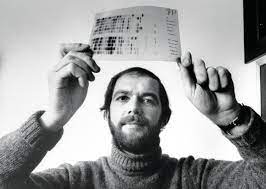Who is the father of DNA fingerprinting in the world?
Although some people claim that the confidentiality of DNA fingerprint databases is violated, DNA fingerprinting plays an extremely important role especially in the fields of forensics, paternity testing and animal identification.

A biochemist, Alec Jeffreys became a professor at the University of Leicester after completing his studies at Oxford University. Jeffreys has studied DNA variants and genetic evolution in families, particularly focusing on so-called "mini-satellites" in DNA strings located outside of core genes that cause the inheritance of diseases.
Sir Alec John Jeffreys, CH FRS MAE (born 9 January 1950) is a British geneticist known for developing techniques for genetic fingerprinting and DNA profiling which are now used worldwide in forensic science to assist police detective work and to resolve paternity and immigration disputes. He is Professor of Genetics at the University of Leicester, and he became an honorary freeman of the City of Leicester on 26 November 1992. In 1994, he was knighted for services to genetics.
In 1984, while working on mini-satellites on seals' DNA, Jeffreys tested a probe consisting of DNA samples taken by X-ray film from different people. While developing this infrared film, Jeffreys saw a phenomenon called "complex mess," and after studying it for a while, discovered that some DNA patterns develop in different people in a completely different way. These mini satellite DNA patterns developed differently in each person and became completely unique, just like a fingerprint.
Jeffreys soon realized the possible effects of his invention, especially in forensics. He patented his invention in 1984 and wrote articles on the subject in the journal Nature in 1985. The technique was first used in an immigration case in the UK in 1986 and in another civil case in Leichestershire in 1986. Today, the use of DNA fingerprinting has become very common in public cases, and new techniques developed in this area have both facilitated and accelerated DNA fingerprinting.
